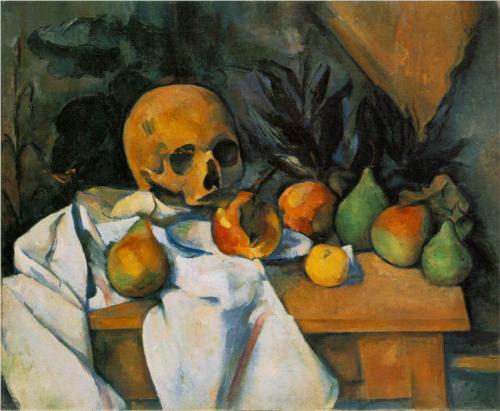All CLEP Humanities Resources
Example Questions
Example Question #401 : Ap Art History
What twentieth century artist made large-scale screen prints of famous photographs in outlandish colors?
Andy Warhol
Mark Rothko
Robert Rauschenberg
Jackson Pollack
Wasily Kandinsky
Andy Warhol
Andy Warhol sought to make art that directly engaged and confronted popular culture in unique and surprising ways. Warhol also liked to experiment with methods that had a sense of automation, such as screenprinting. Both of these aspects of Warhol's work were shown in a series of paintings he did in the 1960s, which had images of celebrities like Marilyn Monroe, Elizabeth Taylor, and James Dean reprinted in bright pinks, blues, and greens.
Example Question #1 : 2 D Art
The kind of artwork that features many pieces of glass or tile arranged into a portrait or other image is called a __________.
diptych
mosaic
mural
devotional
fresco
mosaic
While "mosaic" is a very broad term, it refers to any artwork made by assembling together small pieces of glass and tile. Roman artists and architects frequently used mosaics to create artwork in homes and buildings, and these were frequently realistic depictions of people or landscapes. Mosaics are still used by artists today, but can often take on abstract forms.
Example Question #453 : Ap Art History
Which of the following artistic movements was heavily influenced by the freeform nature of jazz music?
Abstract Expressionism
Cubism
Impressionism
Bauhaus
Futurism
Abstract Expressionism
The eclectic, improvisational nature of jazz had a wide influence in other artistic forms. In particular, visual artists sought to take some of jazz's extemporaneous elements and apply them to painting and sculpture. This idea greatly influence Jackson Pollock's "drip method" and other aspects of Abstract Expressionist art from the 1940s and 1950s.
Example Question #2 : Analyzing The Content Of 2 D Visual Art
Markers of the artistic style of the Dutch painter Rembrandt van Rijn (1606-1669) include all of the following EXCEPT __________.
large-form landscapes
dramatic use of lighting
portraits of individuals
the insertion of himself into his group paintings
a use of very rich and dark colors
large-form landscapes
Rembrandt van Rijn was one of the great masters of the Dutch Golden Age of painting during the seventeenth century. His style was notable for featuring bold colors and dramatic lighting in "everyday scenes" of commonfolk, as well as portraits and scenes out of the Bible. Almost all of Rembrandt's paintings featured people, and he almost never drew landscapes.
Example Question #3 : Analyzing The Content Of 2 D Visual Art
The painter Gilbert Stuart was most well-known for his __________.
still lifes
landscapes
portraits
domestic scenes
historic paintings
portraits
Gilbert Stuart (1755-1828) was one of the very first well known American painters. During the Revolutionary Era, Stuart became essentially the "court painter" of the early American government because of his portraits of leading figures. Stuart's work includes the most famous portraits of George Washington, Thomas Jefferson, James Madison, and many other of America's Founding Fathers.
Example Question #1 : Understanding Terminology That Describes Seventeenth And Eighteenth Century 2 D Visual Art
An artwork described as "pastoral" indicates that its subject matter is __________.
urban life
religious
historical
rural life
classical
rural life
"Pastoral," derived from the same root as "pasture," typically indicates something having to do with shepherds or other kinds of livestock keepers. In art, a "pastoral" piece depicts figures in rural life in some form, even if not necessarily a scene of herding. After the Industrial Revolution, such paintings were made to evoke a country life that was seen as gone.
Example Question #32 : Visual Arts
When describing how an artist arranges elements in a drawing or painting, one is referring to the work's _________________.
Collage
Study
Medium
Matte
Composition
Composition
A study is done before a work is finished, and does not refer to how elements are put together in a work. Matte refers to a non-glassy surface or finish. A collage may incorporate different style or mediums (the material the artist works with), but does not refer to how these are arranged. Composition describes how the elements come together to create the work.
Example Question #43 : Seventeenth And Eighteenth Century 2 D Art
The artist Francisco Goya is from what country?
Italy
Argentina
Brazil
France
Spain
Spain
Francisco Goya is from Spain.
Example Question #1 : Analyzing The Form Of Nineteenth Century 2 D Visual Art

The above image is a woodblock print, meaning it __________.
can only be shown in a large format
can be easily replicated in the same form
can be enlarged and miniaturized easily
can have its colors easily changed
cannot be moved from the place it was first drawn
can be easily replicated in the same form
The woodblock format, popular throughout Asia, is an artistic format that is produced by having a large piece of wood cut into and dyed by the artist. Thereafter, this woodblock can be printed onto canvas or paper, making it extremely easy to duplicate the work of art again and again.
Example Question #41 : Nineteenth Century 2 D Art

The composition above is a painting in the genre of __________.
portrait
still life
history painting
nude
landscape
still life
The painter of this work, Paul Cézanne, was particularly noted for his still lifes. The one in this question, "Still Life with Skull," was painted in 1898 and is particularly notable for the inclusion of a skull, a notable feature of Cezanne's later work from the 1890s on. Cézanne's use of broad brushstrokes, layered color, and different perspectives helped create a bridge from impressionism to modern art movements like cubism.
Certified Tutor
Certified Tutor
All CLEP Humanities Resources




